Best telescopes 2024: For stargazing galaxies, nebulas and more
We've rounded up some of the best telescopes at a range of price points so you can enjoy stunning views of the night sky, whatever your budget.
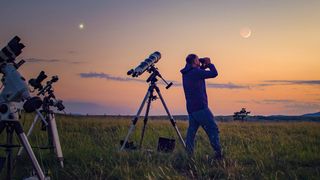
1. The list in brief ↴
2. Best for beginners
3. Best budget telescope
4. Best value for enthusiasts
5. Best premium
6. Best for planets
7. Best for portability
8. Best for astrophotographers
9. Best smart telescope
10. Best for deep space
11. Best for kids
12. Telescope FAQs
13. How we test
Whether you're a budding astronomer or an experienced sky watcher, having one of the best telescopes by your side is a must. From stars to planets, galaxies or nebulas, the universe will be your oyster.
It can be overwhelming to choose between the dozens of telescopes available on the market, especially with the jargon that surrounds them. Our expert reviewers have extensively tested each product in this guide, and laid out everything you need to know when looking for the perfect telescope for you.
If you're not sure what you need, our Telescope FAQs below may help you decide what system and specs might work best for you. There are various different kinds of optical systems available, as well as different levels of aperture and focal length to consider depending on what you wish to view. Whether you're a beginner just starting out, a pro looking for top-quality optics or a tech-savvy person looking for the latest smart technology, there's something on our list for everyone.
If you're just starting out on your sky watching journey, our guide to the best beginner telescopes contains everything you need to know. And if you want a more specialist piece of kit, try our guides to the best telescopes for deep space and the best telescopes for seeing planets.
If you're keen to involve your kids in your astronomy hobby, we have guides to the best telescopes for kids and best binoculars for kids to help spark their interest early.
Solar eclipse glasses deals May 2024

A contributing expert to Space.com, Live Science, All About Space and more, Gemma is the author of several books including 'Quantum Physics in Minutes'. She holds a degree in physical sciences, a Master's in astrophysics and a PhD in computational astrophysics and became fellow of the Royal Astronomical Society in 2011. Gemma is also the Communications and Outreach Office at the European Space Agency.
The quick list
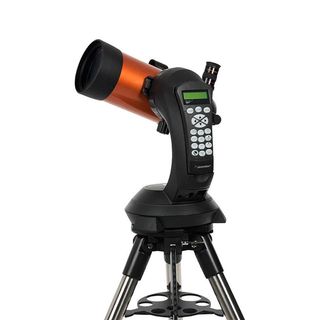
Best for beginners
A great scope for beginners, the Celestron NexStar 4SE is easy to use and set up, produces clear and bright images and has a whole host of useful features.
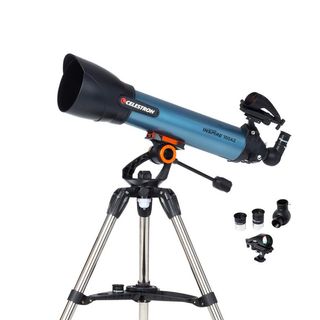
Best budget telescope
A great beginner scope for anyone just getting started with astronomy, it comes with a variety of accessories.
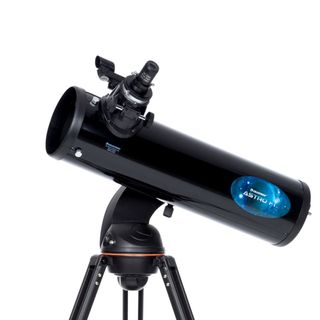
Best value for enthusiasts
We were really impressed with this telescope when we reviewed it and overall, thought that it's good value for money.
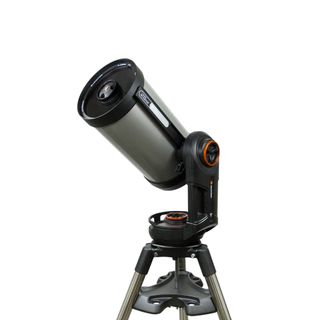
Best premium
We think this is an exceptional telescope that is high quality, easy to set up and offers breathtaking views. It's suited well for experienced astronomers too.
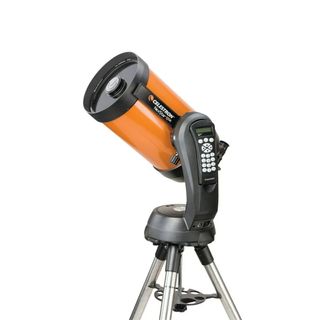
Best for planets
A fantastic scope for any experience level, it's incredibly easy to use yet powerful enough for deep space exploration and even astrophotography.
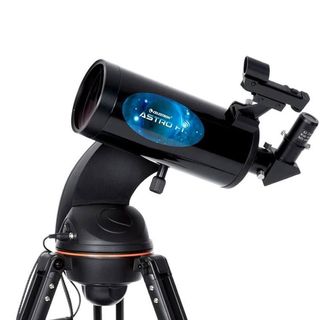
Best for portability
If you live in an urban area with lots of light pollution and need a telescope you can comfortably carry to dark sky sites, this could be the one for you.
Load the next 4 products ↴
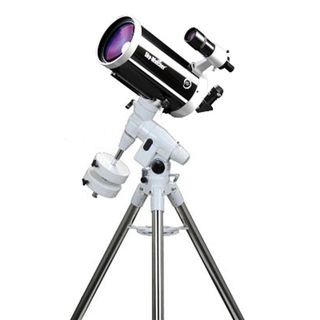
Best for astrophotography
Our favorite pick for astrophotographers, this telescope is a great all-rounder, suitable for capturing everything from nebulas to galaxies. We thought it has outstanding optical quality with no sign of any distortion.
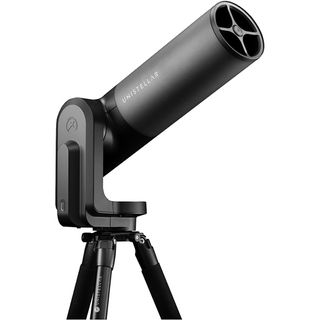
Best smart telescope
If you've got the budget for it, this is Unistellar's most advanced telescope to date. It has a very reliable app, and even features a Smart Light Reduction feature to eliminate light pollution in urban environments.
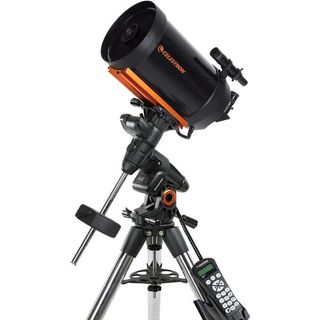
Best for deep space
Great for experienced, long-time astronomers, this scope is excellent for astrophotography thanks to the Edge HD technology. It is a little on the heavy side, but it can carry a load of up to 30 lbs.
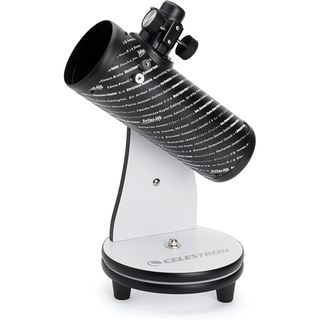
Best for kids
This is a top tabletop telescope and if you're a beginner or looking to inspire a young astronomer, this is an ideal starting point. It's easy to set up and put away, but it's not the most powerful.
Best telescopes 2024 that we recommend
Why you can trust Space.com
Best for beginners







Specifications
Reasons to buy
Reasons to avoid
✅ It's your first telescope: This scope is easy to use and set up, making it perfect for beginner astronomers.
✅ You want GoTo technology: You can easily find and track specific celestial objects with little or no prior knowledge.
❌ You want to travel with it: This telescope isn't the most portable as the tripod doesn't quite fold down entirely.
🔎 Celestron NexStar 4SE If you want to view the planets and bright objects in the sky quickly and effortlessly, the Celestron NexStar 4SE will certainly do the job. ★★★★
The Celestron NexStar 4SE makes a fantastic choice for beginners owing to its fully computerized mount. Celestron's SkyAlign technology uses your date, time and location to auto-find various targets within the night sky at the push of a button, making it easy to get to grips with for newcomers to stargazing.
This telescope is very sturdy in its design, whether that's the mount or the tripod it comes with. This solid build is reflected in its weight. At 23 lbs (10.4 kg) the NexStar 4SE is far from the lightest on this list, nor is it the most portable, as its accompanying tripod doesn't fold down completely. Another thing to note about this telescope is how power-hungry it is; the mount tears through the 8xAA batteries required so quickly, we'd recommend using an external power source. For those reasons, this telescope is perhaps best suited for those who want to stargaze from their backyard, rather than take it on the go.
It features a 4-inch (102mm) aperture and a focal length of 1325mm, which is enough to give sharp views of the planets and other bright sky objects. The downside is that this combination results in a fairly narrow field of view of only 1.2 degrees, which means it struggles to fit bigger deep sky objects into the view. You get a 25mm Plossl eyepiece included in the box, but we think you'll get better results if you purchase an additional 32mm eyepiece and Barlow lens to make the most of the 241x highest useful magnification.
- Read our full Celestron NexStar 4SE review
| Attributes | Notes |
|---|---|
| Design | Solid and sturdy build, signature orange colors. |
| Performance | Great for observing the moon and planets. |
| Functionality | Alignment correction can be tricky. |
Best budget telescope







Specifications
Reasons to buy
Reasons to avoid
✅ You're a beginner: We found it easy to set up and take down, and with it being relatively lightweight, you can easily transport it around with you.
✅ You want to take astrophotos on your smartphone: The lens cap cleverly turns into a smartphone holder so you can capture images of the night sky.
❌ You aren't confident locating objects yourself: This telescope doesn't have GoTo technology, so you'll need to be fairly confident in being able to locate specific celestial objects yourself (or utilize the help of a stargazing app).
❌ You want detailed views of deep sky objects: While this telescope can give great views of planets and the moon, objects further away may be a little underwhelming.
🔎 Celestron Inspire 100az Aimed at beginners and those looking to upgrade, this 4-inch refractor is at its best with the moon and planets and comes with a lens cap that converts to a clever smartphone holder for easy astrophotography. ★★★★
The Celestron Inspire 100AZ is a great choice for beginners. Its user-friendly features and sturdy build make it a breeze to use even to the uninitiated, and it's a relatively affordable option compared to other options in this guide.
Featuring a 100mm aperture, this telescope gathers a significant amount of light, allowing clear observations of faint celestial objects like nebulas and galaxies. Moreover, its long focal length provides substantial magnification for detailed views of planets and other nearby objects.
During our Celestron Inspire 100AZ review, we found a small amount of false color (purple color fringing), and a slight blurring in the field of view was noticeable. The latter is easily resolved with a careful selection of eyepieces, so we recommend investing in one of the best eyepieces to make the most of the Inspire 100AZ's optical system. The slight amount of false color shouldn't dampen your experience unless you are particularly fussy about color accuracy being spot on.
The Inspire 100AZ telescope comes with various accessories, including two eyepieces, a red LED flashlight to maintain night vision, an accessory tray, a StarPointer Pro finderscope for locating celestial objects and a smartphone adapter for simple astrophotography.
- Read our full Celestron Inspire 100AZ review
| Attributes | Notes |
|---|---|
| Design | Fairly lightweight. |
| Performance | Excels with lunar views. |
| Functionality | Easy to set up and take down. |
Best value for enthusiasts
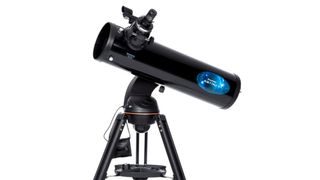
Specifications
Reasons to buy
Reasons to avoid
✅ You want a beginner-friendly, grab & go and easy-to-use telescope: We thought this was a great entry-level telescope that can find targets at the touch of a button and is great for on-the-go observations.
❌ You want a 'traditional' telescope: We found that this telescope is completely useless without the app, so if you want a more traditional telescope without much of the newer technology, look elsewhere.
🔎 Celestron Astro Fi 130 A good telescope at an exceptionally good price, it has everything you'd need if you're just starting out, although we would recommend upgrading some of the included pieces. It can lose charge faster in cold conditions, though, so consider buying an additional power source. ★★★½
With the Astro Fi 130, Celestron has provided a very capable entry-level telescope at an affordable price. This well-constructed tube consists of a Newtonian reflector and comes with a sturdy aluminum tripod, 10mm and 25mm Kellner eyepieces offering 65x and 26x magnification and a red dot finder.
We'd strongly recommend purchasing some mid-range Plossl eyepieces to get the very best out of this scope, and it's worth noting that its batteries can be quick to drain in cold weather, so you might want to consider investing in 12V rechargeable batteries.
The optics on the Astro Fi 130 allow for good views of the Moon, offering enough magnification to see the craters and rilles littering the lunar surface. Venus and Mars are also easy to pick out, and you can even catch a glimpse of the Andromeda Galaxy.
This telescope is a great choice for beginners, who will find it has everything needed to get started on their stargazing journey. The SkyAlign technology doesn't require prior knowledge of the night sky to get ready for viewing, and the Celestron SkyPortal app makes it easy to control the scope via your smartphone or tablet. The app can even recommend celestial objects and guide the computerized mount to them.
- Read our full Celestron Astro Fi 130 review
| Attributes | Notes |
|---|---|
| Design | Very sturdy build with well constructed tube and tripod. |
| Performance | Makes use of SkyAlign technology for easy alignment. |
| Functionality | Great for lunar and planetary observing, but some views are fuzzy. |
Best premium
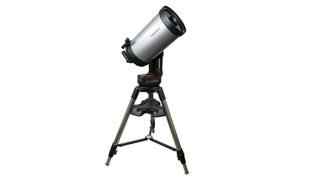
Celestron NexStar Evolution 9.25
Our expert review:
Specifications
Reasons to buy
Reasons to avoid
✅ You're an experienced skywatcher: This telescope offers a complete tour of the universe, although its easy setup would be a dream for beginners, this scope is best suited for more advanced, passionate astronomers.
✅ You want to view a wide range of subjects: This scope has a large aperture which enables clear and detailed views of a wide range of celestial objects, including planets, deep-sky objects and nebulas.
❌ You want something portable: Portability isn't one of the Evolution 9.25's strengths, so it's best used for backyard gazing.
🔎 Celestron NexStar Evolution 9.25 A fantastic telescope suited to experienced and passionate skywatchers, with a price tag to match. It's not the easiest to transport, but we think it's one of the best GoTo telescopes you can buy ★★★★½
The Celestron NexStar Evolution 9.25 is an outstanding GoTo scope that provides breathtaking views of the night sky. With a Schmidt-Cassegrain optical tube boasting a generous aperture of 235mm and a sturdy single-fork arm mount for stability and precision, it delivers impressive performance. The motorized mount features a rechargeable lithium-ion battery, offering an impressive 10 hours of uninterrupted stargazing.
You'll get a good selection of accessories alongside the telescope itself, including a red dot finderscope, star diagonal, accessory tray, international AC adapter, hand control as well as two eyepieces (13mm and 40mm).
While the NexStar Evolution 9.25 boasts an impressive design, it leans towards the heavier side and may not be the most portable option. It's better suited for backyard stargazing rather than frequent travel. Nevertheless, its robust construction and excellent features make up for this minor inconvenience.
Unlike the previous option in this list, the NexStar Evolution 9.25 is a great pick for more experienced sky watchers looking for a top-of-the-range telescope. It's an investment, sure, but it is impressively-designed and boasts quality features.
Astrophotographers may also find this telescope and its motorized mount to their liking, as it can track the movement of celestial objects. The NexStar Evolution 9.25 can also easily be controlled through the free Celestron SkyPortal app, removing the need for a controller and freeing up your hands in the process.
- Grab a bargain over on our Celestron Binocular and Telescope deals page
| Attributes | Notes |
|---|---|
| Design | A bit bulky and tricky to transport. |
| Performance | Crisp views with no defects. |
| Functionality | Motorized mount a good choice for astrophotography. |
Best for planets







Specifications
Reasons to buy
Reasons to avoid
✅ You're looking for a long-term telescope: There's no question that this telescope is pricey, but it's one that will last you for decades — it's not called 'The World's Most Beloved Telescope' for nothing.
✅ You want to use it for astrophotography: Thanks to the smooth and accurate tracking, this scope is a great option for taking stunning astro images of deep sky objects.
❌ You're on a budget: Although this is definitely worth the money, and we'd recommend it if you can stretch to it, it is a pricey piece of kit. If you're on a budget or you're new to the craft, there are plenty of cheaper alternatives that will be more than good enough.
🔎 Celestron NexStar 8SE: An outstanding telescope with incredible optics that would suit a beginner, intermediate or advanced astronomer. It's great for astrophotography and gives beautifully bright and detailed views. Our only fault with it is that it can price out beginners. ★★★★½
The Celestron NexStar 8SE is a rare gem in that it will suit both beginners and more experienced skywatchers alike. You don't need any prior knowledge of the night sky or telescopes, as you can use Celestron's SkyPortal app or any other stargazing app to help you find two stars for the alignment process, but it's a powerful enough telescope that allows for deep space exploration and astrophotography.
The Celestron NexStar 8SE holds an exceptional reputation, earning the esteemed title of 'The World's most beloved telescope' and ranking as the top bestseller on B&H Photo. With StarBright XLT optical coating, it delivers unmatched clarity and contrast for observing planets and the moon. Through its 203.2mm aperture lens, you can witness Jupiter's moons, Saturn's rings and other deep-sky objects with breathtaking detail and vividness. The image is free of chromatic aberration and color fringing, providing stunning views of the night sky.
In our Celestron NexStar 8SE review, we found the telescope's motor operates smoothly and accurately. For astrophotographers, the automatic tracking feature is a dream, enabling them to capture long-exposure shots. These shots can be later stacked and edited to create stunning images of the cosmos.
Once you've set up and aligned the telescope, using the handheld controller is a breeze to point it toward various celestial objects in its extensive database, including planets, galaxies, double stars, star clusters and nebulas. For beginners or those uncertain about what to observe, there's a convenient 'sky tour' option that automatically guides the telescope to different captivating cosmic objects.
The Celestron NexStar 8SE is a high-end telescope, and it comes with a substantial price tag. Nevertheless, it proves to be a worthwhile investment for those serious about skywatching or astrophotography. While it might be beyond the budget of casual astronomy enthusiasts, it is an excellent choice for those planning to immerse themselves in these activities for the long run.
- Read our full Celestron NexStar 8SE review
| Attributes | Notes |
|---|---|
| Design | Can be transported as a fully-assembled setup. |
| Performance | Outstanding optics, slightly tricky to align if you're not used to it. |
| Functionality | Easy to assemble and disassemble. |
Best for portability


While this telescope is very portable, we found the finish doesn't feel very premium.

